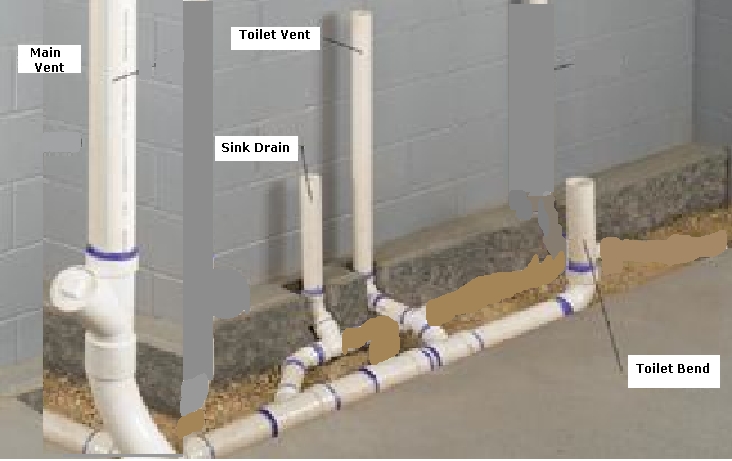The plumbing system within a home plays a vital role in maintaining hygiene and ensuring the efficient disposal of waste. Among the essential fixtures, the toilet stands out as a fundamental element with a complex yet well-structured plumbing system. In this article, we’ll delve into the intricacies of the toilet plumbing diagram, exploring the various components and their functions in the journey of waste disposal and water usage.
The Basics of Toilet Plumbing:
To understand the plumbing diagram of a toilet, it’s crucial to first grasp the basic components and their functions:
- Bowl: The toilet bowl is the visible part of the fixture and serves as the receptacle for waste.
- Tank: Located behind the bowl, the tank stores water that is released during the flushing process.
- Flush Valve: The flush valve is a mechanism at the bottom of the tank that, when activated, releases water into the bowl to flush away waste.
- Fill Valve: The fill valve, also known as the ballcock, controls the entry of water into the tank after flushing, restoring it to the desired level.
- Flapper: The flapper is a rubber seal connected to the flush valve. It lifts during flushing, allowing water to flow into the bowl, and then seals to stop the flow.
- Handle: The toilet handle activates the flush, initiating the flushing process by lifting the flapper.
Toilet Plumbing Diagram:
Water Supply Line:
The toilet plumbing process begins with the water supply line, which connects the toilet to the main water supply of the house. This line fills the tank after each flush, preparing it for the next use.
Fill Valve: The fill valve is a crucial component that controls the water level in the tank. Once the toilet is flushed, the fill valve opens, allowing water to flow into the tank until it reaches the desired level. This is a critical part of water conservation, ensuring that only the necessary amount of water used.
Float Ball or Cup:
Connected to the fill valve, the float ball or cup floats on the water surface inside the tank. As the tank fills, the float rises, and when it reaches a certain level, it signals the fill valve to shut off, stopping the inflow of water. This mechanism prevents overfilling and water wastage.
Flush Handle:
The flush handle is an external component that, when pressed, activates the flush valve. This initiates the flushing process by releasing water from the tank into the bowl.
Flush Valve:
The flush valve is a large drain opening at the bottom of the tank. When the flush handle is pressed, the flush valve opens, allowing water to rush into the bowl. This sudden inflow creates a siphon effect, pulling waste from the bowl and into the drain.
Trapway: The trapway is a curved, S-shaped channel at the base of the toilet bowl. Its purpose is to hold water and create a seal, preventing sewer gases from entering the home. The shape of the tramway also assists in the removal of waste during flushing.
Waste Pipe: The waste pipe is a crucial component that carries waste from the toilet to the main sewer line or septic system. It typically made of PVC or cast iron and is responsible for the safe disposal of waste.
Maintaining Toilet Plumbing:
- Preventing Clogs: Regular maintenance is essential to prevent clogs in the tramway and waste pipe. Using toilet paper that is designed to break down easily and avoid flushing non-flushable items can help prevent blockages.
- Checking for Leaks: Periodically inspecting the toilet for leaks is crucial. A leaking toilet can waste a significant amount of water and lead to increased water bills. Common areas to check include the tank, fill valve, and connections to the water supply.
- Ensuring Proper Flushing: If the flush handle becomes difficult to press or the flushing mechanism is not functioning correctly, it’s important to address the issue promptly. This may involve adjusting or replacing components such as the flush handle, flapper, or fill valve.
Conclusion: A Seamless Flow of Functionality
Understanding the toilet plumbing diagram provides insight into the seamless flow of functionality that allows for the efficient disposal of waste and the conservation of water. As a fundamental fixture in every home, the toilet’s plumbing system reflects a delicate balance of components working in harmony. Regular maintenance and prompt attention to any issues ensure the continued reliability of this essential element of our daily lives.

